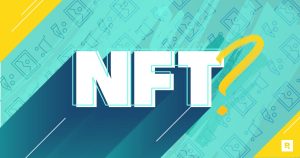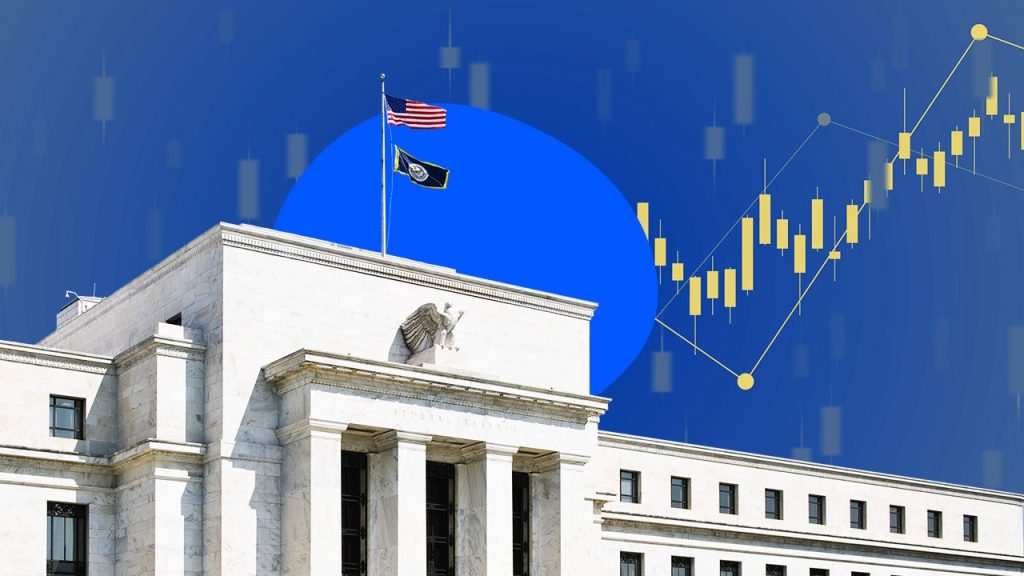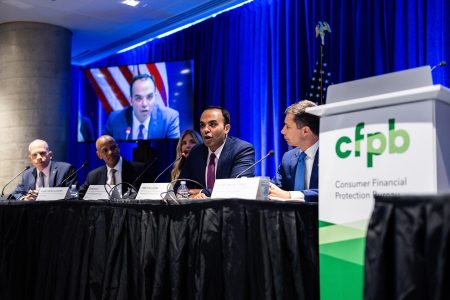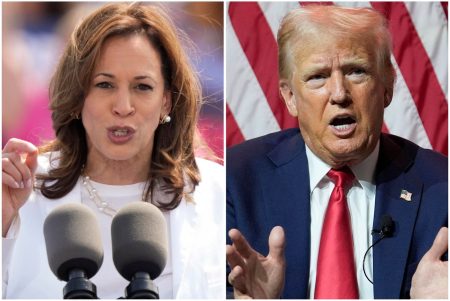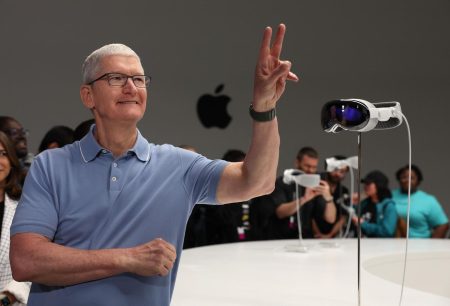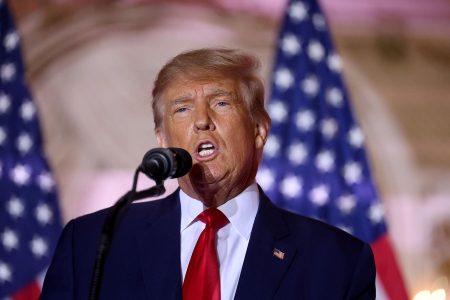Key takeaways
- In the aftermath of the post-coronavirus pandemic inflation surge, the Federal Open Market Committee (FOMC) raised interest rates 11 times in the span of about a year and a half, bringing the federal funds rate to a 23-year high of 5.25-5.5 percent.
- Throughout history, the Fed’s key rate has been as high as 19-20 percent and as low as 0-0.25 percent.
- The Fed’s decisions on interest rates have significant impacts on consumers’ financial lives, impacting both borrowing costs and earnings on savings.
The ultra-low rates consumers have been accustomed to since the 2008 financial crisis have all but certainly come to an end.
In the span of just about a year and a half, the Federal Open Market Committee (FOMC) lifted interest rates 11 times, bringing its key federal funds rate to a target range of 5.25-5.5 percent. That’s the highest since early 2001, a Bankrate analysis of the Fed’s moves throughout history shows. Not since the 1980s has the Fed hiked rates at this speed, the analysis also found.
But when it comes to the world’s most powerful central bank, the past can often be a guide. History, for example, shows that the Fed’s goal of “softly landing” the U.S. economy — bringing down inflation without harming the job market or economy — has proven difficult and elusive. Throughout the Fed’s rate-hike history, officials have rarely been able to slow the economy without kick-starting a recession. And even if the Fed does end up gradually cutting borrowing costs at some point this year, interest rates are unlikely to be as cheap as they were during the coronavirus pandemic-era.
To help consumers understand the historical significance of the Fed’s rapid rate hikes in the post-pandemic era, Bankrate compiled this guide of the Fed’s previous rate moves from 1981 to the present. Interest rates may now seem historically high, but they’re currently not that far off from their historic average, the analysis found. Before the Great Recession, the market-driven “effective” federal funds rate averaged 6.38 percent.
Rate moves are expressed in “basis points,” which are equal to 1/100 of a percentage point. For example, a 75 basis point increase is 0.75 percentage point.
Until inflation begins to cooperate, expect a continued ‘wait and see’ attitude from the Fed.
— Greg McBride, Bankrate Chief Financial Analyst
-
The Fed is the central bank of the U.S., tasked with two main economic objectives: price stability and maximum employment. When prices rise too rapidly, the Fed raises interest rates to slow economic growth. When the financial system looks like it might need a bit of a boost, it cuts interest rates to spur spending and hiring. Together, Fed watchers refer to those interest rate decisions as monetary policy.
-
The Fed’s interest rate decisions come down to how they’re interpreting their dual mandate of price stability and maximum employment. Typically, Fed officials want to ensure that everyone who wants a job can find one. And when it comes to rising prices, the Fed shoots for a not-too-hot, not-too-cold “goldilocks” level of inflation around 2 percent. But the job market and inflation have an inverse relationship. A too-hot labor market can make prices rise faster than the Fed prefers, while low inflation might require higher unemployment.
The Federal Reserve’s aggressively hawkish policy has been all about defeating red-hot inflation. Up until March 2022, rates were at a rock bottom level of near-zero. During the coronavirus pandemic, meanwhile, the Fed slashed borrowing costs to near-zero as lockdowns swept the nation — pushing the U.S. unemployment rate to 14.8 percent, the highest since the Great Depression
-
When economists or investors pay attention to the Fed’s rate hikes, they’re mainly watching for changes to the U.S. central bank’s key interest rate: the federal funds rate. Fed officials don’t explicitly go to every bank or lender and mandate a certain interest rate. Rather, the benchmark rate that they control acts as a lever for all other types of borrowing and saving rates throughout the economy.
Like a chain of dominoes falling one by one, a rate hike from the Fed translates to more expensive borrowing costs on almost every purchase a consumer finances: from credit card spending and auto loans to mortgages and home equity lines of credit. But a silver-lining for consumers, higher rates mean higher yields on certificates of deposit (CDs) and savings accounts.
Fed’s interest rate history of 1981-1990: Volcker fights the ‘Great Inflation’ with historic rate moves and aggressively hawkish monetary policy
The fed funds rate has never been as high as it was in the 1980s.
The main reason is because the Fed wanted to combat inflation, which soared in 1980 to its highest level on record: 14.6 percent.
As a result, the U.S. central bank did something that might seem counterintuitive for an institution that strives to maintain the most productive economy possible: It manufactured a recession to bring prices back down.
The fed funds rate began the decade at a target level of 14 percent in January 1980. By the time officials concluded a conference call on Dec. 5, 1980, they hiked the target range by 2 percentage points to 19-20 percent, its highest ever.
Consumer borrowing costs soared as a result. The average rate on a 30-year fixed-rate mortgage hit the highest on record during the era, spiking to near 20 percent, Bankrate’s historic data shows.
Key insights on the 1981-1990 era
- Fed chair of the decade: Paul Volcker (1979-1987)
- Peak of the decade: 19-20 percent
- Low of the decade: 6 percent
But the Fed has changed almost as much as interest rates since then. Instead of slowly and gradually moving rates in one direction (up or down), interest rates would often rise, then fall, then rise again.
Rates fell sharply to a target range of 13-14 percent on Nov. 2, 1981, then back up to 15 percent in the first four months of 1982, then back down to 11.5-12 percent on July 20, 1982, records of the moves show. The “effective” fed funds rate averaged at 9.97 percent during this 10-year period. Interest rates haven’t eclipsed 10 percent since November 1984.
One reason for the volatility: Chair Paul Volcker decided that the best way to combat inflation involved limiting the growth of the money supply, rather than directly targeting interest rates — the way officials control inflation today.
Other differences between today’s Fed and the Fed of the past include a wider target range for the benchmark fed funds rate, sometimes spanning 5 percentage points instead of the 0.25 percentage point window today. Not to mention, the Fed would adjust rates at unscheduled meetings more often than not, after which it wouldn’t release policy statements.
Chairman Paul Volcker was the main driver of Fed policy in this decade, leading the Fed until Chairman Alan Greenspan took the post in August 1987.
Critics at the time vilified Volcker for harming the economy. Farmers, for example, drove their tractors to the Fed’s headquarters in Washington, D.C., to protest higher interest rates, according to historians at the St. Louis Fed, while car dealers mailed him car keys of unsold vehicles in coffins.
The moves came with a price: Unemployment soared to almost 11 percent, at the time the highest since the Great Depression, historic Bureau of Labor Statistics data shows. Inflation, however, stayed away for years, falling to below 2 percent by 1986.
Fed interest rate history of 1991-2000: Alan Greenspan steers the Fed through a brief recession then presides over ‘Great Moderation’ with a long economic expansion
Fed rate moves
| Meeting date | Rate change | Target |
|---|---|---|
| Source: Fed’s board of governors | ||
| January 9, 1991: Conference call | -25 basis points | 6.75 percent |
| February 1, 1991: Conference call | -50 basis points | 6.25 percent |
| March 8, 1991: Unscheduled move | -25 basis points | 6 percent |
| April 30, 1991: Conference call | -25 basis points | 5.75 percent |
| Aug. 5, 1991: Conference call | -25 basis points | 5.5 percent |
| Sept. 13, 1991: Conference call | -25 basis points | 5.25 percent |
| Oct. 30, 1991: Conference call | -25 basis points | 5 percent |
| Nov. 5, 1991 | -25 basis points | 4.75 percent |
| Dec. 6, 1991 (After a Dec. 2, 1991, conference call) | -25 basis points | 4.5 percent |
| Dec. 20, 1991 (After Dec. 17, 2001, meeting) | -50 basis points | 4 percent |
| April 9, 1992: Unscheduled move | -25 basis points | 3.75 percent |
| June 30-July 1, 1992 | -50 basis points | 3.25 percent |
| Sept. 4, 1992: Unscheduled move | -25 basis points | 3 percent |
| Feb. 3-4, 1994 | +25 basis points | 3.25 percent |
| March 22, 1994 | +25 basis points | 3.5 percent |
| April 18, 1994: Emergency meeting | +25 basis points | 3.75 percent |
| May 17, 1994 | +50 basis points | 4.25 percent |
| Aug. 16, 1994 | +50 basis points | 4.75 percent |
| Nov. 15, 1994 | +75 basis points | 5.5 percent |
| Jan. 31-Feb. 1, 1995 | +50 basis points | 6 percent |
| July 5- 6, 1995 | -25 basis points | 5.75 percent |
| Dec. 19, 1995 | -25 basis points | 5.5 percent |
| Jan. 30-31, 1996 | -25 basis points | 5.25 percent |
| March 25, 1997 | +25 basis points | 5.5 percent |
| Sept. 29, 1998 | -25 basis points | 5.25 percent |
| Oct. 15, 1998: Emergency meeting | -25 basis points | 5 percent |
| Nov. 17, 1998 | -25 basis points | 4.75 percent |
| June 29-30, 1999 | +25 basis points | 5 percent |
| Aug. 24, 1999 | +25 basis points | 5.25 percent |
| Nov. 16, 1999 | +25 basis points | 5.5 percent |
| Feb. 1-2, 2000 | +25 basis points | 5.75 percent |
| March 21, 2000 | +25 basis points | 6 percent |
| May 16, 2000 | +50 basis points | 6.5 percent |
After a tumultuous few years for the Fed during the Great Inflation, Greenspan faced a much calmer period, though that’s not to say he didn’t have his fair share of challenges during his near 18-year tenure at the helm of the Fed.
After an eight-month recession beginning in August 1990, Greenspan and Co. managed to take the fed funds rate all the way up to a target level of 6.5 percent in May 2000, the highest of the period. Rates reached a low of 3 percent in September 1992, the lowest of the decade.
Besides during the early 1990s, the Fed mainly adjusted rates at Federal Open Market Committee (FOMC) meetings, a practice that is in rhythm with today’s Fed. Officials did hike rates on April 19, 1994, at an emergency meeting due to inflation worries, and they cut borrowing costs at an unscheduled Oct. 15, 1998, gathering.
Key insights on the 1991-2000 era
- Fed chair of the decade: Alan Greenspan (1987-2006)
- Peak of the decade: 6.75 percent
- Low of the decade: 3 percent
Another noteworthy feat, the U.S. central bank also made its first “insurance” cuts, meaning officials cut interest rates to give the economy an extra boost, not to fight a recession. Such was the case in 1995, 1996 and 1998, when the financial system confronted a share of headwinds ranging from debt default in Russia to a major hedge fund’s collapse.
The longest-serving Fed chair to date, Greenspan is often nicknamed “maestro” for having steered the economy through the longest economic expansion at the time. The Fed unofficially began identifying 2 percent as its inflation target during this decade — a pivotal decision that would irrevocably change modern monetary policy.
A proponent of deregulation, however, his policies would later be blamed for fueling asset bubbles that led to the dot-com boom and bust and the housing bubble that sparked the 2008 financial crisis.
Fed interest rate history of 2001-2010: Fed faces the dotcom bust, the 9/11 terrorist attacks and the 2008 financial crisis
Rate cuts 2001-2003
| Meeting date | Rate change | Target |
|---|---|---|
| Jan. 3, 2001: Emergency meeting | -50 basis points | 6 percent |
| Jan 30-31, 2001 | -50 basis points | 5.5 percent |
| March 20, 2001 | -50 basis points | 5 percent |
| April 18, 2001: Emergency meeting | -50 basis points | 4.5 percent |
| May 15, 2001 | -50 basis points | 4 percent |
| June 26-27, 2001 | -25 basis points | 3.75 percent |
| Aug. 21, 2001 | -25 basis points | 3.5 percent |
| September 17, 2001: Emergency meeting | -50 basis points | 3 percent |
| Oct. 2, 2001 | -50 basis points | 2.5 percent |
| Nov. 6, 2001 | -50 basis points | 2 percent |
| Dec. 11, 2001 | -25 basis points | 1.75 percent |
| Nov. 6, 2002 | -50 basis points | 1.25 percent |
| June 24-25, 2003 | -25 basis points | 1 percent |
Source: Fed’s board of governors
Rate hikes 2004-2006
| Meeting date | Rate change | Target |
|---|---|---|
| June 29-30, 2004 | +25 basis points | 1.25 percent |
| Aug. 10, 2004 | +25 basis points | 1.5 percent |
| Sept. 21, 2004 | +25 basis points | 1.75 percent |
| Nov. 10, 2004 | +25 basis points | 2 percent |
| Dec. 14, 2004 | +25 basis points | 2.25 percent |
| Feb. 1-2, 2005 | +25 basis points | 2.5 percent |
| March 22, 2005 | +25 basis points | 2.75 percent |
| May 3, 2005 | +25 basis points | 3 percent |
| June 29-30, 2005 | +25 basis points | 3.25 percent |
| Aug. 9, 2005 | +25 basis points | 3.5 percent |
| Sept. 20, 2005 | +25 basis points | 3.75 percent |
| Nov. 1, 2005 | +25 basis points | 4 percent |
| Dec. 13, 2005 | +25 basis points | 4.25 percent |
| Jan. 31, 2006 | +25 basis points | 4.5 percent |
| March 28, 2006 | +25 basis points | 4.75 percent |
| May 10, 2006 | +25 basis points | 5 percent |
| June 29, 2006 | +25 basis points | 5.25 percent |
Source: Fed’s board of governors
Rate cuts 2007-2008
| Meeting date | Rate change | Target & target range |
|---|---|---|
| Sept. 18, 2007 | -50 basis points | 4.75 percent |
| Oct. 30-31, 2007 | -25 basis points | 4.5 percent |
| Dec. 11, 2007 | -25 basis points | 4.25 percent |
| Jan. 22, 2008: Emergency meeting | -75 basis points | 3.5 percent |
| Jan. 29-30, 2008 | -50 basis points | 3 percent |
| March 18, 2008 | -75 basis points | 2.25 percent |
| April 29-30, 2008 | -25 basis points | 2 percent |
| Oct 8, 2008: Emergency meeting | -50 basis points | 1.50 percent |
| Oct. 28-29, 2008 | -50 basis points | 1 percent |
| Dec. 15-16, 2008 | -100 to 75 basis points | 0-0.25 percent |
Source: Fed’s board of governors
The 2000s were the Fed’s most rhythmic period yet, with the Fed following clear cycles for both tightening and loosening rates.
To start the decade, the Fed slashed interest rates 13 times to a low of 1 percent — a range that might’ve been unthinkable for those who remembered rates in the ‘80s — after a stock market bubble in the technology sector burst, kickstarting a recession that was exacerbated by the 9/11 terrorist attacks.
Key insights on the 2001-2010 era
-
Fed chair of the decade:
- Alan Greenspan (1987-2006)
- Ben Bernanke (2006-2014)
- Peak of the decade: 6 percent
- Low of the decade: 1 percent
The U.S. central bank then managed to hike interest rates 17 times between 2004 and 2006 — all of those increases in gradual, quarter-point moves — to a high of 5.25 percent.
That was until the financial crisis of 2008 happened and the ensuing Great Recession, which slammed the brakes on the economy. The Fed then did the unthinkable: It slashed interest rates by 100 basis points to near-zero. Chairman Ben Bernanke led the Fed during this period, which was, at the time, one of its most aggressive economic rescue efforts in Fed history.
During this era, the Fed also unveiled an experimental, unconventional monetary policy tool: quantitative easing, or large scale asset purchases (LSAPs) as they’re formally known. A massive bond-buying program to lower long-term interest rates and give the economy a bigger boost caused the Fed’s balance sheet to balloon, soaring to $4.5 trillion from a starting place of $870 billion.
Fed interest rate history of 2011-2020: The economy recovers from the Great Recession and faces the coronavirus pandemic a decade later
Rate hikes 2015-2018
| Meeting date | Rate change | Target range |
|---|---|---|
| Dec. 15-16, 2015 | +25 basis points | 0.25-0.5 percent |
| Dec. 13-14, 2016 | +25 basis points | 0.5-0.75 percent |
| March 14-15, 2017 | +25 basis points | 0.75-1 percent |
| June 13-14, 2017 | +25 basis points | 1-1.25 percent |
| Dec. 12-13, 2017 | +25 basis points | 1.25-1.5 percent |
| March 20-21, 2018 | +25 basis points | 1.5-1.75 percent |
| June 12-13, 2018 | +25 basis points | 1.75-2 percent |
| Sept. 25-26, 2018 | +25 basis points | 2-2.25 percent |
| Dec. 18-19, 2018 | +25 basis points | 2.25-2.5 percent |
Source: Fed’s board of governors
Rate cuts 2019-2020
| Meeting date | Rate change | Target range |
|---|---|---|
| July 30-31, 2019 | -25 basis points | 2-2.25 percent |
| Sept. 17-18, 2019 | -25 basis points | 1.75-2 percent |
| Oct. 29-30, 2019 | -25 basis points | 1.5-1.75 percent |
| March 3, 2020: Emergency meeting | -50 basis points | 1-1.25 percent |
| March 14-15, 2020: Emergency meeting | -100 basis points | 0-0.25 percent |
Source: Fed’s board of governors
The Fed couldn’t escape zero rates in the 2010s just as much as it couldn’t escape devastating recessions.
Officials would ultimately end up leaving interest rates at rock-bottom until 2015, after which they only hiked interest rates by 25 basis points once per year. That is, until 2017, when the Fed hiked three times, and 2018, when they hiked four more times. The fed funds rate peaked at 2.25-2.5 percent.
Facing tepid inflation and moderating growth, the Fed also decided in 2019 to cut interest rates three times to give the economy a fresh boost — similar to Greenspan’s “insurance” cuts of the 1990s.
Key insights on the 2011-2020 era
-
Fed chairs of the decade:
- Ben Bernanke (2006-2014)
- Janet Yellen (2014-2018)
- Jerome Powell (2018-Present)
- Peak of the decade: 2.25-2.5 percent
- Low of the decade: 0-0.25 percent
The fed funds rate looked like it was about to settle there until the coronavirus pandemic came along, ushering back in another era of near-zero rates. The Fed slashed rates to zero across two emergency meetings within 13 days of each other as the gears of the economy came to a halt.
Chair Janet Yellen took the helm of the Fed from Bernanke in February 2014 and steered the economy through its Great Recession recovery until February 2018, when Chair Jerome Powell was installed.
Fed interest rate today 2021-present: The Fed’s latest moves in an era of soaring inflation
Rate hikes 2022-present
| Meeting date | Rate change | Target range |
|---|---|---|
| March 15-16, 2022 | +25 basis points | 0.25-0.5 percent |
| May 3-4, 2022 | +50 basis points | 0.75-1 percent |
| June 14-15, 2022 | +75 basis points | 1.50-1.75 percent |
| July 26-27, 2022 | +75 basis points | 2.25-2.5 percent |
| Sept. 20-21, 2022 | +75 basis points | 3-3.25 percent |
| Nov. 1-2, 2022 | +75 basis points | 3.75-4 percent |
| Dec. 13-14, 2022 | +50 basis points | 4.25-4.5 percent |
| Jan. 31-Feb. 1, 2023 | +25 basis points | 4.5-4.75 percent |
| March 21-22, 2023 | +25 basis points | 4.75-5 percent |
| May 2-3, 2023 | +25 basis points | 5-5.25 percent |
| July 25-26, 2023 | +25 basis points | 5.25-5.5 percent |
Source: Fed’s board of governors
It’s been a blast from the past for Fed rate-setting, with inflation returning as the No. 1 economic threat in the aftermath of the coronavirus crisis.
The Fed hiked interest rates by a quarter point in March 2022 for the first time since 2018, leaving interest rates at near-zero percent for two years to give the economy time to recover from the coronavirus pandemic. They didn’t stop breaking milestones there. The Fed approved the largest rate hike since 2000 during its May gathering when it raised interest rates by half a percentage point, as well as the largest rate hike since 1994 when it lifted interest rates by three-quarters of a percentage point in June. The Fed followed up on that historic move with three additional increases of that size.
Officials felt comfortable leaving their foot on the gas even as inflation soared to a 40-year high — in part, because they were guided under a false assumption that massive price pressures were only transitory.
Experts say U.S. central bankers usually worry about the wrong conflict. Just how officials spent the 1990s worried about inflation, the Fed probably spent the early 2020s fearing too-low inflation, says Scott Sumner, monetary policy chair emeritus at George Mason University’s Mercatus Center.
“Central banks tend to focus on fighting the last war,” Sumner says. “If you have a lot of inflation, you get a more hawkish stance. If you’ve undershot your inflation target, then the Fed thinks, ‘Well, maybe we should’ve been more expansionary.’ Powell came into his job with that determination, that if there was another recession, they would be more aggressive. My own view is that the strategy was relatively successful at first but pushed too far.”
Key insights on the 2021-2022 era
- Fed chair of the decade: Jerome Powell (2018-Present)
- Peak of the decade: 5.25-5.5 percent
- Low of the decade: 0-0.25 percent
By many standards, however, an entirely different U.S. central bank is steering the boat, meaning officials don’t want to tame inflation with aggressive, volatile rate hikes similar to the 1980s, he adds. Yet, officials have also spoken out against the stop-and-go manner of rate hikes leading up to the Great Inflation of the 1980s.
“The successful Volcker disinflation in the early 1980s followed multiple failed attempts to lower inflation over the previous 15 years,” Powell said in a pivotal 2022 speech at the Fed’s annual monetary policy symposium in Jackson Hole, Wyoming. “Our aim is to avoid that outcome by acting with resolve now.”
The Fed has made great progress bringing inflation back toward their 2 percent inflation target. Prices in April rose 3.4 percent from a year ago, almost three times slower than the eye-popping 9.1 percent annual rate from June 2022, according to the Bureau of Labor Statistics consumer price index (CPI). Excluding the more volatile food and energy categories, so-called core inflation is up 3.6 percent from a year ago, BLS data also shows.
Yet, price pressures aren’t slowing as quickly as they once were, underscoring just how much harder the next mile of getting price pressures down to Fed officials’ goal may be.
Even if the Fed doesn’t end up raising rates more from here, stubborn inflation could lead the Fed to keep borrowing costs high for longer. Yet, the more inflation falls, the more restrictive interest rates could become.
The Fed’s preferred gauge of inflation shows better improvement, but price pressures still look stubborn. Overall prices in April rose 2.7 percent from a year ago, less than half a percentage point above the Fed’s official target but matching levels from March and up from 2.5 percent in February, separate data from the Department of Commerce shows.
Bottom line
Even if the Fed eventually cuts interest rates this year, borrowing costs are likely to stay higher than they were in the pandemic era. With higher interest rates likely here to stay, concentrate on eliminating high-interest debt, boosting your credit score and shopping around for the best places where you can park your cash, so your money is rewarded.
“If the economy evolves broadly as expected, it will likely be appropriate to begin dialing back policy restraint at some point this year,” Powell said in a March congressional testimony. “But the economic outlook is uncertain, and ongoing progress toward our 2 percent inflation objective is not assured.”
Read the full article here


